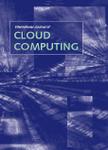版权所有:内蒙古大学图书馆 技术提供:维普资讯• 智图
内蒙古自治区呼和浩特市赛罕区大学西街235号 邮编: 010021

作者机构:Computer Science and Information Science Srinvas University Karnataka India Ministry of Education Malaysia School of Computing Universiti Malaysia Perlis Malaysia Graphic Era Hill University Bhimtal Campus Uttarakhand India College of Engineering and Computer Science Lebanese French University Erbil Iraq Electrical and Electronics Engineering AMET University Chennai India University Vellore India School of Electrical and Electronics Engineering Sathyabama Institute of science and technology Chennai India
出 版 物:《International Journal of Cloud Computing》 (Int. J. Cloud Computing)
年 卷 期:2022年第11卷第5-6期
页 面:568-577页
核心收录:
学科分类:0809[工学-电子科学与技术(可授工学、理学学位)] 0828[工学-农业工程] 08[工学] 0706[理学-大气科学] 0901[农学-作物学] 0812[工学-计算机科学与技术(可授工学、理学学位)]
摘 要:Radio frequency-based smart farming is revolutionising agriculture. To meet the growing demand of food, farm productivity should be improved by predicting crop performance in diverse environmental conditions. Farming becomes smarter with automation and radio frequency technology. Radio frequency collect and manage data about crop performance, climate change, livestock welfare, resource shortages and atmosphere that frequently influence farming construction via smartphone applications where the data container remains and is retrieved wherever. It also aids in animal nursing and termination. With smart sensors and equipment, farmers can increase crop production with reduced cost and time. Smart farming along with sensors offers the guarantee of expanding efficiency while diminishing generation costs and limiting ecological effects. The sensor data will be collected and stored in the cloud. Analysis of farming is done with computing the data stored in the cloud. Based on these cloud data, farmers perform farming in a proper annual time. Cloud-based storage is more appropriate for these computations. Various climatic conditions for farming are analysed with these cloud data. Copyright © 2022 Inderscience Enterprises Ltd.